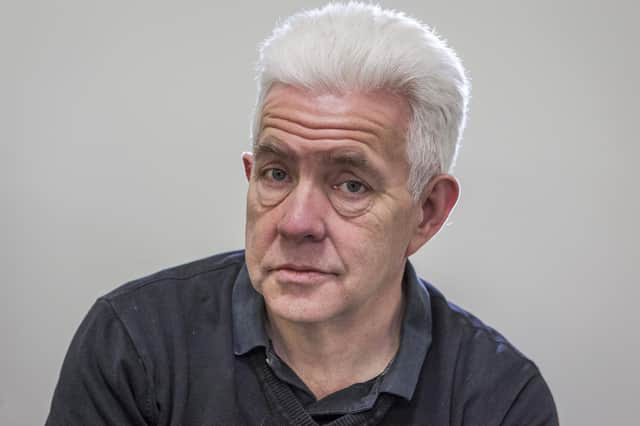Ian McMillan: Why I want to take a flip chart with me when I move onto the next life


After I’ve shuffled off this mortal coil, I want to get interred with an artefact that’s been a big part of my life. I don’t want to get lowered into the Barnsley loam with a notebook or a pen or a collection of my poetry though. Stick a flip chart next to me, and a couple of pens in case one dries out and I’ll go to the afterlife a happy man. In an era of interactive whiteboards and iPads that you can link to the internet so that you can project their small screens onto a big screen on the wall, just give me the old and flapping technology of a flip chart and I promise you I can make a poem up with any group of people in any room anywhere.
The flip chart has been my tool of choice in workshops for decades, and the first question I always ask when I get to a venue is about the proximity of a flip chart. Sometimes the flip charts people came up with were antique ones that were at the very edge of collapse and sometime they interpreted the word flip chart in odd and inventive ways; I’ve been presented with clipboards, rolls of wallpaper, A4 sheets sellotaped to easels from a nursery and giant Post-It notes.
Advertisement
Hide AdAdvertisement
Hide AdBecause of this inconsistency, and much to my musician mate Luke Carver Goss’s horror, we got a flip chart on permanent loan and had to force it into his car next to his valuable instruments when we went on tour.
Looking back, I can remember when I first used the flip chart in a poetry workshop; it was in a library somewhere in the north-east of England and I was working with a group of people who had never written a poem before and they looked a bit nervous, gazing down at the blank sheets of paper provided by the library or looking out of the window trying desperately to find some inspiration in the driving rain. There was a flip chart in the corner of the room and I dragged it over to the table we were working around and we started to write a poem together, after I’d given them a first line that went “Rain on the library window panes…”; their nervousness disappeared and the poem took shape slowly and beautifully. And I was hooked on the idea of the group poem created in the moment by a disparate bunch of writers and non-writers.
I know that writing can often be a solitary activity but I’m also convinced of the idea of writing, particularly the writing of poetry, can be a group activity with everybody contributing a line, or a word, or a rhyme, or just a smile
of encouragement. Arts for Wellbeing is a kind of buzz phrase these days, and in my opinion there are few things that make me feel better than making up a brand new verse of two with a gaggle of humans in a room.
The flip chart: The Eighth Wonder of the World!